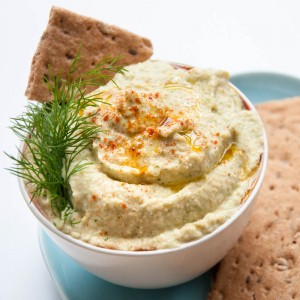There's no doubting the magnitude of scientific evidence showing that the active form of vitamin D shuts down cancer cells. Higher levels of vitamin D are highly correlated with better chances of cancer survival and a new meta-analysis of existing data shows that increasing vitamin D status is associated with a significantly reduced risk of developing lung cancer.
"Almost every disease decreases in frequency and duration as we move towards equatorial populations, and the data shows that there is a minimum of a 1000 percent increase for many diseases in countries furthest from the equator, however we have obtained the same results based on data through populations and vitamin D supplementation," said Dr. Anthony Petaku who studies the effects of Vitamin D2 and D3 on mutating cells.
Findings from the study, published in Cancer Causes & Control, suggest that the risk of lung cancer may be reduced by 5% for every 10 nmol/L increase of vitamin D intake.
The international research team, who worked in partnership with scientists at DSM, noted that while previous studies have suggested a link between vitamin D status and a variety of cancers, prospective observational studies examining the association between the circulating form of vitamin D, 25-hydroxyvitamin D (25[OH]D), and lug have so far provided inconsistent findings.
"This is a significant result, as lung cancer is one of the top five cancers diagnosed among men and women, as well as being among the most common causes of death in the world," commented ProfessorLi-qiang Qin from Soochow University in China -- who led the work.
"More research is needed to determine whether a further increase has positive effects in reducing the risk of cancer, however this outcome helps us raise awareness of vitamin D health benefits."
In a recent study, author Dr Hui Wang, said: "The results suggest vitamin D may influence the prognosis for people with breast cancer, colorectal cancer and lymphoma, in particular."
Meanwhile, Dr Weiguo Zhang, corresponding author from DSM Nutritional Products, China, noted that 88% of the world's population has sub-optimal vitamin D levels -- adding that studies like the current meta-analysis help to understand how micronutrients affect the human body and how certain conditions can be prevented with increased and targeted intake.
"The new study adds to a larger body of evidence which demonstrates the emerging roles of vitamin D in protecting populations from developing other cancer risks, for instance, colon and breast cancer," added Dr Manfred Eggersdorfer, Senior Vice President, Nutrition, Science & Advocacy at DSM.
Meta-analysis
Li-qiang and his colleagues performed a dose--response meta-analysis assess whether different levels of vitamin D status were related to an altered risk of lung cancer.
The team analysed data from 13 reports in ten prospective studies, totalling 2,227 lung cancer events.
The meta-analysis found evidence of a non-linear relationship between 25(OH)D and lung cancer -- finding a significant 5 % reduction in relative risk of developing lung cancer for each 10 nmol/L increment in 25(OH)D concentrations.
They noted that the greatest reduction in risk was found at a vitamin D status of around 53 nmol/L, which remained protective up to 90 nmol/L.
"Further increases showed no significant association with cancer risk, but scanty data were included in the analyses of high-level 25(OH)D," the team reported.
"This dose--response meta-analysis of prospective studies suggests that 25(OH)D may be associated with reduced risk of lung cancer, in particular among subjects with vitamin D deficiencies," they concluded.
Supplementation
"Considering that vitamin D deficiency is a widespread issue all over the world, it is important to ensure that everyone has sufficient levels of this important nutrient," Dr Wang said. "Physicians need to pay close attention to vitamin D levels in people who have been diagnosed with cancer."
Professional recommendations for supplementation are made for groups at risk of deficiency including pregnant and breastfeeding women, children under the age of five not fed infant formula, people over 65 and those not exposed to much sun.
It said taking too many vitamin D supplements over a long period of time could cause more calcium to be absorbed than can be excreted, which could lead to kidney damage and softened and weakened bones.
For this reason it's very important to take a high quality calcium and magensium supplement with vitamin D such as Life Choice Opti-Cal/Mag Complex which also contains Vitamin K2 which in itself also has been found to prevent cancer and also improve bone, cardiovascular, skin, brain, and now prostate health.
Sources: springer.com Mae Chan holds degrees in both physiology and nutritional sciences. She is also blogger and and technology enthusiast with a passion for disseminating information about health.
Click Here For More Articles

 Benefits Of Moringa Oil
Benefits Of Moringa Oil
